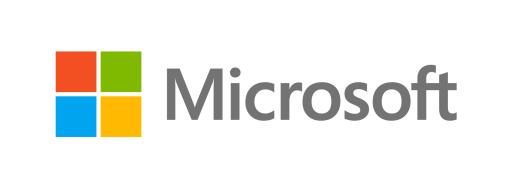

ERRANT Studiosの無料FAtLCキット (ERRANT Studios' Free FAtLC Kit) ERRANT Studios' Free FAtLC Kit
コンテンツID:2183039
-
238
新しいウェブコミックの制作に使用しているアセットが満載の無料キットです。
あなたはそれが役に立つと思うかもしれません。
カラーパレット1枚とオートアクションセット1枚が付属。
A free kit full of assets we're using to produce a new webcomic.
You may find it useful.
Includes 1 color palette, and 1 auto action set.
これは一体何なのでしょうか?
クリップのネイティブCMYKカラー演算には欠陥があります。そのため、ビンテージコミックの制作を模倣することは、自分自身の見積もりに頼らずに非常に困難です。
このカタログは、非常に複雑な回避策を提供します。
含まれる材料
1.クラシックコミックプロダクションカラーパレットこのパレットは、1930年代から1950年代にかけて米国のコミックアーティストが入手した顔料の種類に基づいており、当時のビンテージカラーシートと同じ命名規則とグリッド構成に従っています。これらはサンプリングされません。それらは、その時代に活動した複数の出版社の基準と慣行に詳述された混合量から数学的に導き出されます。さらに、...オリジナルにはない黄色と緑をカバーする後の時代の10の追加見本は、特別なシュールな効果と主人公のユニークな力に使用しています。後の時代の9つの非常にニュートラルで暖かく、肌と肌の色調 により、キャラクターの多様性を高めます。6つのプロダクション中心の見本 -サンプリングされた鉛筆の芯:4H、2B、および6Bサンプリングボールペン:黒、青、赤2.クラシックコミックスライブパレットヘルパーカラープロファイルのプレビューがオンのときにキャンバス上で色がどのように見えるかを示すために使用できる便利なレイヤーマテリアル。スポイトを使用してライブパレットとして使用でき、Clipの貧弱なアプリのカラーマネジメントが混乱を引き起こすのを防ぐことができます。3. ESiプロダクションアクションセット私たちが積極的に構築しているキュレーションされていないアクションセット。ここで関連するアクションには、色の分離が含まれます。
ステップバイステップガイド
1. セットアップとアート制作
このプロセスでは、従来のYRB減法を使用して開発された色彩理論に依存しながら、RGBベースの加法色計算を使用する必要があります。したがって、目的の結果を得るには、付属のカラーパレットを使用する必要があります。ドットをうまくレンダリングするには、十分な解像度が必要です。私の作品はモバイルデバイスを対象としているため、最終的なアートには2.6インチ x 5インチ、450 DPIを使用しています。キャンバスに現実世界の単位を与えると、Clipのmm単位ディスプレイをブラシに使用できます。ほとんどの古いコミックには0.3mmから1.5mmの線が引かれていたため、これは非常に役立ちます。他のルールはあまりありません。アクションで使用するには、1つのカラーレイヤー、または1つのカラーフォルダーが必要です。私はフォルダを使用する傾向があります。2. 色分解カラーレイヤーまたはフォルダーを選択し、必要な色分解アクションを使用します。65LPIは、非常に初期のコミックや新聞の標準をエミュレートします。80lpi は、小さなキャンバスで作業している場合に役立ちます。このプロセスは自動化する必要があります。レイヤーの表示と不透明度をいじる必要があるかもしれませんが、ほとんどの場合オフにする自動ノーズレイヤーがあります。3.印刷効果のエクスポート
エクスポートするアートの背景が真っ白または透明であることを確認してください。フラット化されたすべてのアートをエクスポートするか、カラーアートのみをエクスポートし、後で変更するために黒インクを分離しておくことができます。TIFF、JPG、またはPSDとしてエクスポートします。カラープロファイルを含めます。どうしても必要な場合を除いて、サイズを変更しないでください。
4. コンバージョン
サードパーティのソフトウェアを使用して、このエクスポートされたファイルをCMYKプロファイルからRGBプロファイルに変換します。Affinity Photoは、これを開いた後、デフォルト設定を使用してすぐにpngにエクスポートすると、これを自動的に行います。
Affinity Photoをお持ちの場合は、「拡散」フィルターと「ボックスぼかし」フィルターを利用して、アートに「にじみ」効果を追加することもできます。そうでない場合は、使用できるクリップフィルターがいくつかあります。5. 最終構成手順 3 でフラット化したすべてのアートを書き込んだ場合、または元の作業ファイルをそのまま保持する場合は、元のキャンバスとまったく同じサイズと解像度で新しいキャンバスを開始し、デフォルトの RGB カラープロファイルを使用していることを確認してください。それ以外の場合は、元のファイルに戻って、カラープロファイルをデフォルトのRGBに設定します。変換されたアートをインポートします。このレイヤーを乗算するように設定します。その下に紙のテクスチャを追加して、さらにリアルにすることができます。私はマスクを追加して、非常に軽いエアブラシ、トーンブラシ、ブレンダーでアートを「すり減らす」のが好きです。また、少し質感のある非常に小さな鉛筆ツールを使って、マスクに傷を加えることもできます。試してみてください。不透明度の低いセピア色の斑点のあるレイヤーを上に追加し、レイヤープロパティで水彩エッジを追加します。
例!



What the heck is this?
Clip's native CMYK color math is flawed. This makes it extremely hard to emulate vintage comic production without relying on one's own estimations.
This catalogue offers an extremely complicated workaround.
Included Materials
1. Classic Comics Production Color PaletteThis palette is based on the kinds of pigments available to U.S. comic artists between the 1930s and the 1950s and it follows the same naming convention and grid organization as vintage color sheets from the time.These are NOT sampled. They are mathematically derived from the mixing quantities detailed in the standards and practices of multiple publishing companies active during the era.Additionally, there are...10 extra swatches from later eras covering yellows and greens not in the original, which we use for special surreal effects and the titular character's unique powers.9 extra neutral warm and skin and flesh tones from later eras to allow for more character diversity.6 production centric swatches -Sampled Pencil Lead: 4H, 2B, and 6BSampled Ballpoint Pen: Black, Blue, and Red2. Classic Comics Live Palette HelperHelpful layer material you can use to show how colors will look on the canvas while color profile preview is on. Can be used as a live palette, with the eyedropper, to avoid Clip's poor app color management from causing confusion.3. ESi Production Action SetUncurated Action Set we're actively building. The relevant actions here involve color separations.
Step-by-Step Guide
1. Setup and Art Production
This process requires the use of RGB based additive color math while relying on color theory developed using a traditional YRB subtractive system. So you NEED to use the included color palette to get the desired result.You need enough resolution to render the dots well. My work is aimed for mobile devices so I use 2.6in x 5in at 450 DPI for final art.Giving your canvas real-world units allows you to use Clip's mm unit display for brushes. This is very helpful as most old comics had lines between 0.3mm and 1.5 mm.Keep black ink on a separate layer from all other colors.There's really not a lot of other rules. You just need to have one color layer, or one color folder to use with the action. I tend to use a folder.2. Color SeparationsSelect your color layer or folder and use the color separations action you want. 65lpi emulates very early comics and newspaper standards. 80lpi is more helpful if you're working on a smaller canvas.The process should be automated.You may have to play around with layer visibility and opacity, there's an automatic nose layer I almost always turn off.3. Export Print-EffectMake sure the background of the art you're exporting is either pure white or transparent.You can either export all flattened art or you can export only the color art and keep the black inks separate for later alterations.Export as a TIFF, JPG, or PSD. Include the color profile. Do not resize unless absolutely necessary.4. ConversionUsing a third party software, convert this exported file from a CMYK profile to an RGB profile. Affinity Photo does this automatically when opened and then immediately exported to a png using default settings.
If you do have Affinity Photo, you can also utilize their 'Diffuse' and 'Box Blur' filters to add some ' bleeding' effect to the art. If not, there are some Clip filters that can be used.5. Final CompositionIf you exported all flattened art in step 3, or you want to keep the original working file intact, start a new canvas the exact same size and resolution of the original, making sure you use the default RGB color profile. Otherwise, go back to the original file and set its color profile to default RGB.Import the converted art. Set this layer to multiply.You can add a paper texture under it to give it extra realism.I like to add a mask and 'wear away' at the art with very light airbrushing, tone brushing, and blenders. You can also add scratches into the mask with a slightly textured, very small pencil tool.Experiment! Add layers on top with splotches of low opacity sepia and add a watercolor edge in the layer properties.
Examples!



カテゴリー1 Category 1














































